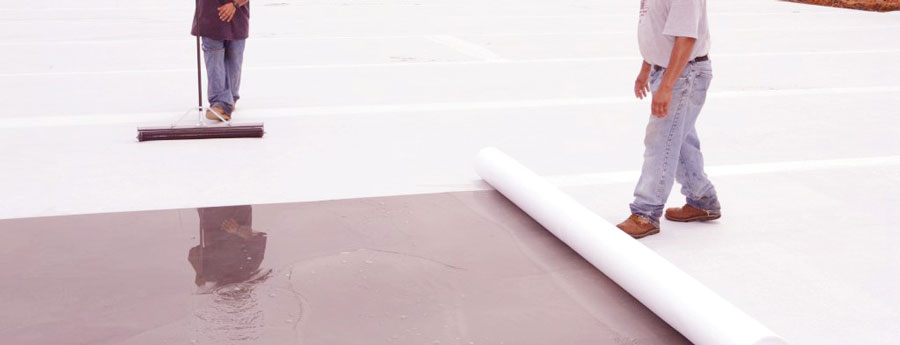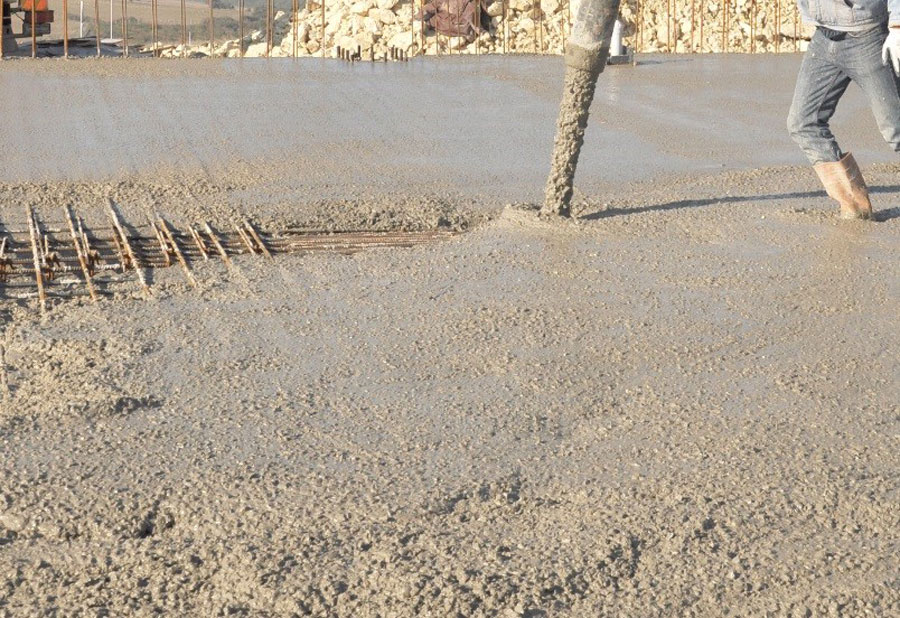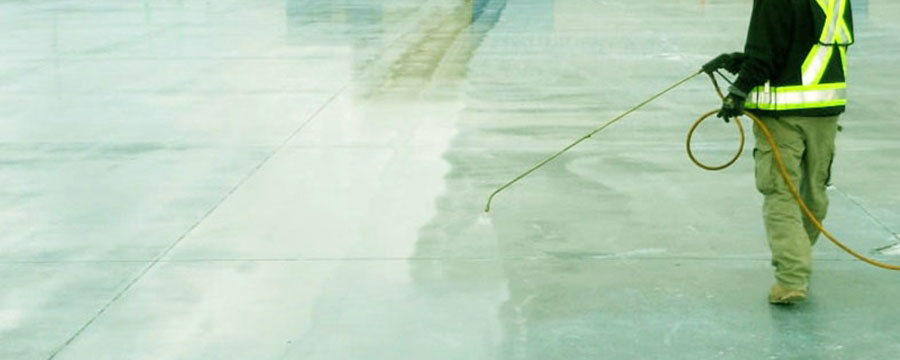In the case where the average air temperature during concrete pouring is over + 30 ° C for three consecutive days constitute hot weather conditions for pouring.
Since high air temperature accelerates hydration, increases viscosity loss, increases mixing water need, reduces strength and durability, and increases volatility and large volume changes, appropriate precautions should be taken against the adverse effects of these events.
Excessively hot, dry and windy weathers have very negative consequences for concrete if precautions are not taken. The sudden and high evaporation that occurs as a result of these conditions, causes shrinkage and cracking on the surfaces.

The evaporation rate of the water which is formed as a result of sweating on the concrete surface can be found by abac. If the amount of water evaporating from 1 m² surface area exceeds 0,500 kg in 1 hour, cracking on the surface to occur is highly likely to and special protection must be applied.
Precautions to be taken in concrete pouring in hot weather can be listed as follows;
♦ Cements with low hydration heat should be preferred and cements with early settling should be avoided. The cement dosage should be kept as low as possible.
♦ Aggregates should be protected from direct sunlight as much as possible to prevent overheating. Aggregates can also be cooled by wetting.
♦ Since the mixing water has the most effect on the temperature of the fresh concrete, it must be cooled before using and measures must be taken to prevent it from being warmed by outside temperatures.
♦ Set retardant and mixing water reducing (plasticizing) chemical additives can be used.
♦ Fresh concrete should be placed, compressed and the screed should be applied as soon as possible.
♦ If possible pouring should be done at night during cooler hours of the day.
♦ Before pouring, the area around the mold and casting should be wetted well and lower temperature and humidity should be provided.
♦ After the first screed is applied immediately after pouring the concrete, in the event if a footprint of 1-2 mm depth is left when stepped on the concrete surface, a second screed should be applied.

♦ Water curing should be started immediately after the second application of screed, and for at least 3 days, all concrete surfaces should be kept moist with abundant water so that all concrete surfaces remain wet. Water curing should be continued dampening surfaces for at least 14 days after pouring, not allowing them to dry.
♦ The temperature of curing water should not be too low compared to the concrete temperature, especially during and after the setting phase; it should be as close to the concrete temperature as possible. While water curing application is continued on unmolded surfaces, molded surfaces should not be forgotten and kept moist.
♦ Against evaporation and water loss surfaces should be protected from the direct effects sunshine and wind with waterproof covers, plastic covers or sacks. In particular, the sacks should be watered so that they are constantly wet.
♦ Wind protectors should be installed against wind and the concrete should be protected from the effects of the wind.

